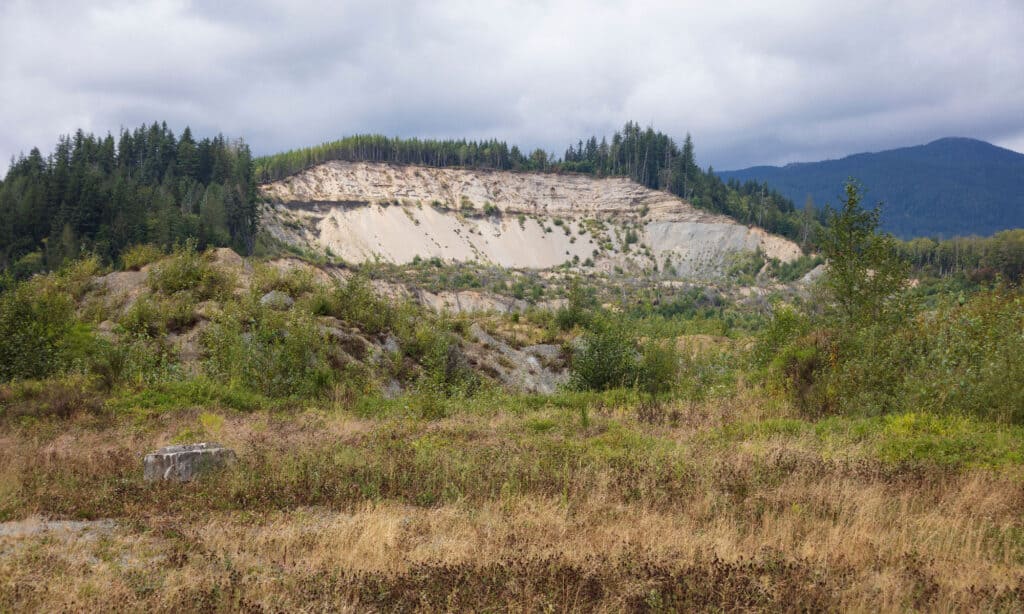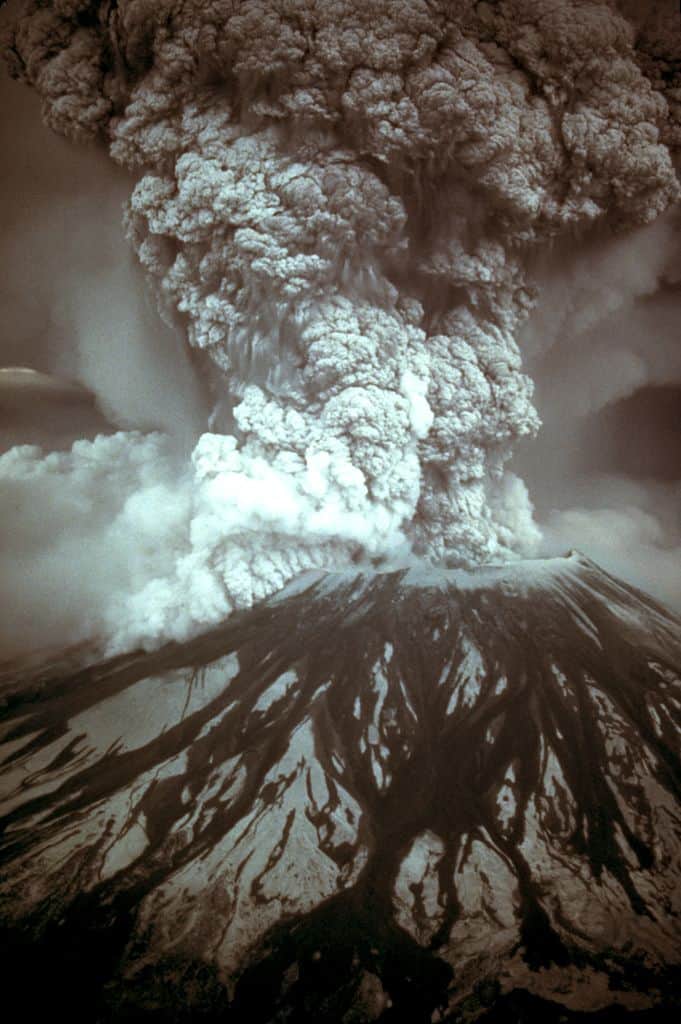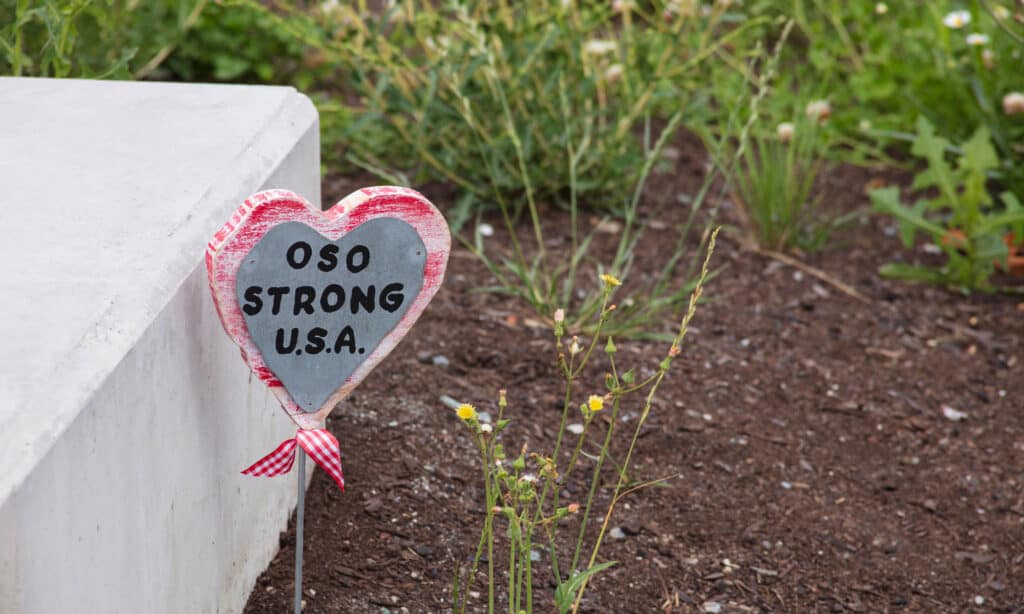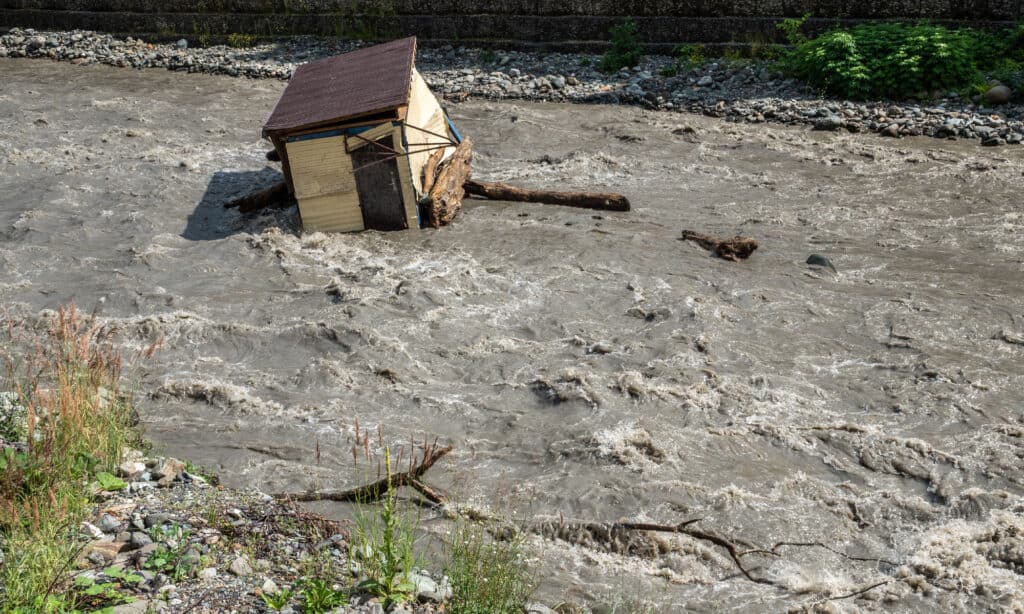Washington is home to many streams, rivers, and slopes, not its steady downpour of rain. It is also prone to many natural disasters, including floods, wildfires, earthquakes, and volcanoes. So, it is no surprise that Washington is regarded as one of the most vulnerable to mudslides. When you put all these together, you have a recipe for devastating mudslides or even landslides.
The rate of natural disasters is on the rise in Washington, and with it, an increased risk of mudslides. In this article, you will find some information about the most devastating mudslides in Washington, including the Oso slide. We will also discuss the famous Washington mudslide of Mount St. Helen, mudslide triggers, and how long you should expect it to last.
The Most Devastating Mudslide in Washington
Oso Mudslide

The worst mudslide in the history of the United States is the Oso mudslide.
©SandraG/Shutterstock.com
The Oso mudslide is currently regarded as the worst mudslide in the history of the United States. This is not because of its volume. In fact, it pales in comparison to the Washington mudslide. However, the Oso mudslide resulted in the death of about 43 people following its occurrence in March 2014, making it the deadliest mudslide in recent history. It obstructed the North Fork Stillaguamish River and ruined several homes and some parts of the State Highway 530.
The flow moved at 40 miles per hour, moving almost 18 million tons of sand and clay. The extent of the damage was probably because the volume of the slide was not expected. It surpassed the range of previous landslides with similar sizes, volumes, and types.
Mount St. Helen Mudslides

©Austin Post / This image is in the public domain in the United States because it only contains materials that originally came from the United States Geological Survey, an agency of the United States Department of the Interior.
The Mount St. Helen mudslide took place in 1980 following the volcano’s eruption in the mountain in the same year. The volcano also triggered a massive landslide, the largest recorded in the United States. Over 200 homes were destroyed, and several railways, highways, and land areas were affected by the eruption of ash. The heat and intensity from the volcano melted ice and glaciers, which resulted in a massive debris flow that traveled 80 km (50 miles). Several people died in the eruption, as well as its aftermath. The damages caused are estimated to run into several billions of dollars in today’s worth.
What Caused the Oso Mudslide?

Mudslides happen when the water content in the soil is high.
©SandraG/Shutterstock.com
The Oso Washington mudslide happened where landslides had already taken place. It is evident then that the area was perfect for a mudslide attack. Visiting the particular factors that caused that monstrous slide, we have high soil porosity due to frequent rainfall and precipitation of up to 200% that lasted through February and March of that year. The heavy rain had loosened up the soil, and all it needed was one final push.
Mudslides happen when the water content in the soil is high. It becomes much easier for gravity to pull down loose bits. And all it takes is a slight flood or rainfall to cause a mudflow.
In this case, previous mudslides had eroded most of the hill as far back as the 1900s. In 2006, a large part of the hill (about 900 feet) collapsed into the river and flooded several homes in the area.
Fast forward to 2014, when a massive mudslide swept up to 10 million cubic feet of debris and mud across Steelhead Haven and damaged State Route 530.
Reports also state that frequent logging in the area may have contributed to the gravity of the slide. Logging is the act of cutting down trees to make timber. Such activities expose the earth’s surface to rainfall in higher intensities than average.
In turn, hillsides and slopes become exposed and could be further weakened by other natural forces. One of the aftermaths of such is the collapse of hills and, sometimes, destructive mudslides.
Where are Mudflows Most Common?

Washington has a lot of volcanic sites and quite several active volcanoes.
©Dark_Side/Shutterstock.com
Mudflows can quickly begin in volcanic areas, mainly arid and semiarid regions. Water supply is scarce in the arid areas, while semiarid areas have slightly better access to water (rainfall). Such places are usually dried, cracked, and exposed to forces of nature. In the event of a flood (yes, floods happen), the debris and dirt will be easily swept off and rapidly become a mudflow.
Contrary to popular opinion, not all parts of Washington receive an excellent water supply, especially east of the Cascade Mountains. So, areas like these are potential mudslide sites. Again, Washington has a lot of volcanic sites and quite several active volcanoes. And most mudflows actually contain volcanic material.
Here’s how it works. A volcano erupts and throws up and around ashes and mud. These particles could overfill and flood rivers nearby, thereby creating mudflows. On the other hand, heavy rainfall would create pools of water that carry volcanic substances. Within a short period, you could have a quick-moving stream of mud, debris, and ash. This is common in areas where volcanoes have erupted, arid lands, and places susceptible to heavy rainfall and logging like Washington, Southern California, Alaska, Hawaii, and Columbia.
How Long Does a Mudslide Last?

Depending on the causes, mudslides can last for several minutes or hours.
©iStock.com/Paul Owens
Mudslides move along slopes, and that makes for easy momentum. They can last for several minutes or hours, depending on the causes. Flows triggered by heavy rainfall usually become liquefied enough to move at incredible speeds. Mudslides can move rocks, giant boulders, and even cars.
They are often described as “rapid or extremely rapid” flows moving at speeds as quick as 60 miles per hour. So, they can be done in a short while. However, the aftermath can leave homes, cities, and countries reeling for years. For instance, the cost of repairing the highway, and damaged towns, businesses, and infrastructure would take quite a long period and massive finance.
The photo featured at the top of this post is © Nelson Antoine/Shutterstock.com
Thank you for reading! Have some feedback for us? Contact the AZ Animals editorial team.






